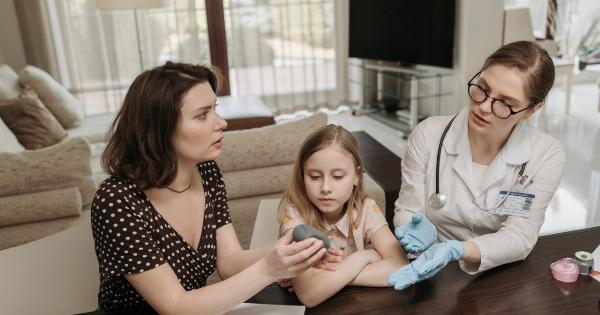Common colds and rhinosinuses are both respiratory conditions that can cause discomfort and misery. While they share some similarities in terms of symptoms and causes, there are also some key differences between the two.
Understanding these differences can help individuals with the right treatment and management strategies to alleviate their suffering and prevent further complications.
What Are Colds?
A common cold, also known as a viral upper respiratory infection, is a contagious illness that affects the nose and throat.
It is primarily caused by a viral infection that can be transmitted through close contact with an infected person, or by touching contaminated surfaces or objects and then touching the face.
Colds are characterized by a range of symptoms, including:.
- Nasal congestion
- Runny nose
- Sneezing
- Sore throat
- Cough
- Mild headache
- Fatigue
Understanding Rhinosinuses
Rhinosinuses, also known as sinusitis, is an inflammation of the sinuses. The sinuses are air-filled cavities located within the bones of the skull and face.
When these cavities become inflamed, either due to an infection or an allergic reaction, it can result in a variety of uncomfortable symptoms.
The symptoms associated with rhinosinuses include:.
- Pain and pressure in the face
- Nasal congestion
- Runny nose
- Headache
- Cough
- Postnasal drip
- Bad breath
- Fatigue
The Differences Between Colds and Rhinosinuses
While colds and rhinosinuses share some similar symptoms, there are notable differences between the two conditions:.
- Cause: Colds are primarily caused by viral infections, whereas rhinosinuses can be caused by both viral and bacterial infections, as well as allergies.
- Duration: Colds typically last for a week to ten days, whereas rhinosinuses can last for several weeks or even months.
- Pain and pressure: Rhinosinuses often cause significant facial pain and pressure, which are not commonly associated with common colds.
- Postnasal drip: This symptom is more common in rhinosinuses and can lead to a persistent cough.
Treatment and Management
Both colds and rhinosinuses are generally self-limiting conditions, which means they will resolve on their own without specific medical treatment. However, there are various ways to alleviate symptoms and promote faster recovery:.
- Resting and getting adequate sleep
- Drinking plenty of fluids to stay hydrated
- Using over-the-counter medications such as pain relievers, decongestants, and antihistamines to relieve symptoms
- Applying warm compresses to the face to alleviate pain and pressure
- Using saline nasal sprays or rinses to clear nasal passages
- Using a humidifier to moisten the air and reduce nasal congestion
- Avoiding known allergens or irritants that may exacerbate symptoms
Prevention Strategies
Preventing the spread of colds and reducing the risk of developing rhinosinuses can be achieved through the following strategies:.
- Washing hands frequently with soap and water, especially before eating or touching the face
- Avoiding close contact with individuals who have a cold or sinus infection
- Using tissues or the elbow to cover the mouth and nose when coughing or sneezing
- Keeping the environment clean and regularly disinfecting frequently touched surfaces
- Getting vaccinated against the flu, which can help prevent cold-like symptoms caused by influenza viruses
- Managing allergies by avoiding triggers and using appropriate medications
When to Seek Medical Care
In most cases, colds and rhinosinuses do not require medical treatment. However, it is important to seek medical care if:.
- The symptoms persist or worsen after a week
- There is severe facial pain or swelling
- There is a high, persistent fever
- There is blood in nasal discharge
- Symptoms significantly interfere with daily activities or quality of life
The Unpleasantness of Colds and Rhinosinuses
Dealing with a common cold or rhinosinuses can be a frustrating and uncomfortable experience.
By understanding the differences between these respiratory conditions and implementing appropriate prevention and management strategies, individuals can better cope with their symptoms and promote a speedy recovery.























